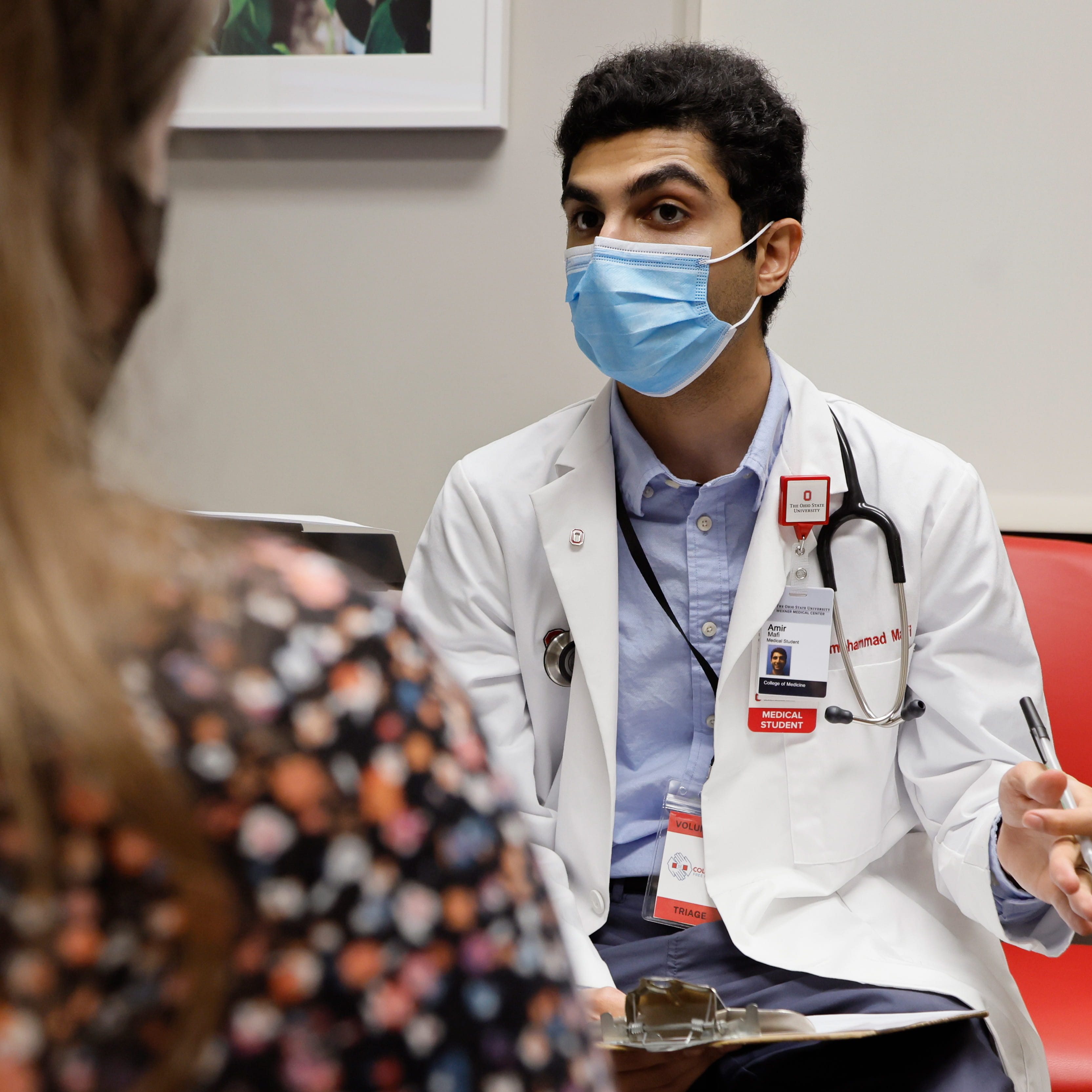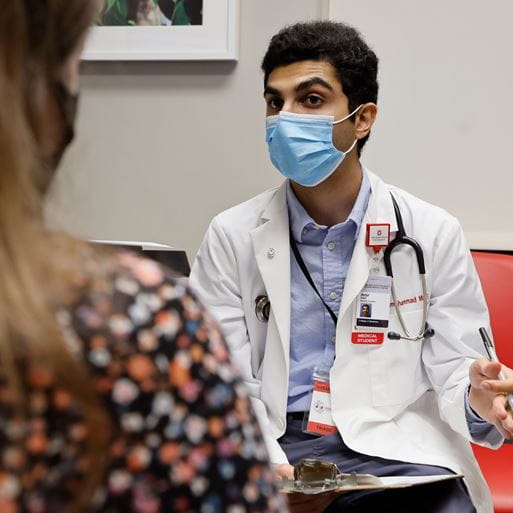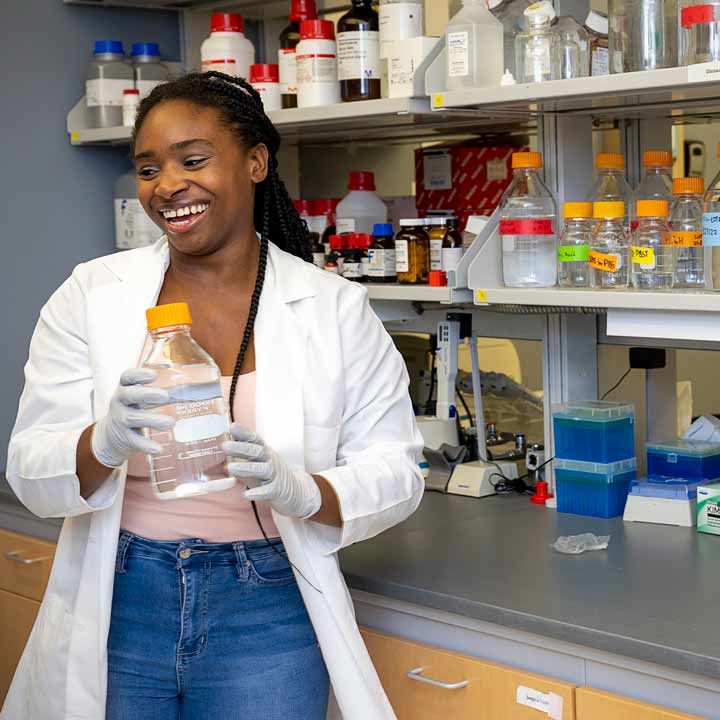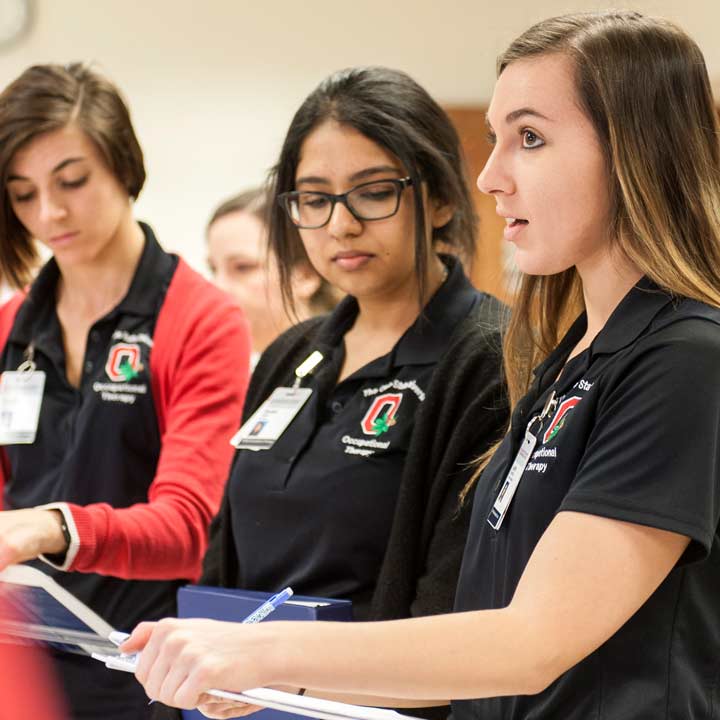
New MD track to produce the next generation of Community Medicine physicians
 With a growing physician shortage nationwide, the United States continues to face health care disparities not only because of socioeconomic status, race, ethnicity, age, sexual identity and disability, but due to geographic location as well. Although Ohio is the seventh most populous state in the nation, it struggles with this issue, too, as more than 26% of its citizens are living in rural communities. According to data in the 2021 County Health Rankings & Roadmaps’ annual report, Franklin County, where The Ohio State University’s main campus is located, has more than 1,300 primary care physicians — one for every 990 residents. By comparison, Morrow County, 40 miles away, has only six primary care physicians — one for every 5,850 residents.
With a growing physician shortage nationwide, the United States continues to face health care disparities not only because of socioeconomic status, race, ethnicity, age, sexual identity and disability, but due to geographic location as well. Although Ohio is the seventh most populous state in the nation, it struggles with this issue, too, as more than 26% of its citizens are living in rural communities. According to data in the 2021 County Health Rankings & Roadmaps’ annual report, Franklin County, where The Ohio State University’s main campus is located, has more than 1,300 primary care physicians — one for every 990 residents. By comparison, Morrow County, 40 miles away, has only six primary care physicians — one for every 5,850 residents.
With its commitment to serve all of Ohio, The Ohio State University College of Medicine has set out to make a difference and increase the number of community medicine physicians to care for patients in midsize and rural communities.
Partnering with Bon Secours Mercy Health, one of the largest and most expansive health care systems in the country, a new Community Medicine Medical Degree Track will be offered at Ohio State, with unique clinical experiences at Mercy Health – St. Rita’s Medical Center. This community hospital, located in Lima, Ohio, a city with a population of almost 40,000, serves patients in northwestern Ohio — some who drive over an hour to seek care.
“The Community Medicine MD Track provides a new option for medical students who are interested in practicing medicine in a community setting,” says Carol R. Bradford, MD, MS, FACS, dean of the Ohio State College of Medicine. “They will benefit from the Ohio State College of Medicine’s innovative curriculum, the community care expertise of Bon Secours Mercy Health and student support resources at The Ohio State University at Lima, one of our regional campuses.”
Scheduled to start in 2024, medical students accepted into the program will complete their first two years of training at Ohio State’s Columbus campus and the remaining two years of core clinical training at St. Rita’s Medical Center.
“Students will have hands-on experience with patients from less densely populated areas,” says Jennifer McCallister, MD, clinical professor and associate dean for Medical Education at the Ohio State College of Medicine. “Faculty who practice at St. Rita’s will provide students with the education to care for these patients’ most pressing health needs.”
Along with learning the science of medicine, great physicians also need to learn empathy, integrity and compassion. The connections students and faculty make with their patients is critical to the trust they build with doctor-patient relationships, especially in less densely populated areas where patients may have to travel a long way to receive care.
“Working as engaged leaders in the community will enable our students to become more empathetic and compassionate caregivers and help them to quickly build relationships within the community where they serve,” says Dr. McCallister. “As leaders within these communities, they will be uniquely positioned to bring together teams who can effectively address the challenges their patients face and to work collaboratively to eliminate local inequities in care.”
Serving the community is an integral part of the college’s curriculum and of its Interprofessional Education Program, which emphasizes student learning in an interprofessional, team-based environment, where students learn and work alongside clinicians and students of pharmacy, nursing, therapy, social work and behavioral health. This structure allows students to gain a holistic perspective of the value each discipline offers to health care and how team-based collaborative care improves patient outcomes. This is particularly important for physicians who will be working in less densely populated areas, where resources are often scarce and reaching across sectors and professions is essential to serve patients who have health determinants unique to those areas.
The program, the first of its kind in the region, is the result of the Healthy State Alliance, a strategic initiative between The Ohio State University Wexner Medical Center and Mercy Health, designed to tackle Ohio’s most critical health needs. A long-standing partnership with Nationwide Children’s Hospital, where the college houses its Department of Pediatrics, informed the partnership between Ohio State and Mercy Health, which began through the building of joint transplant clinics and cancer centers across Ohio.
“We are deeply committed to our land-grant mission and uplifting all of Ohio,” says Dr. Bradford. “Partnering with Bon Secours Mercy Health to develop the physician-leaders of tomorrow will help reduce health care disparities in counties across our state and transform the health of all our communities.”

New MD track to produce the next generation of Community Medicine physicians

Creating more diversity in biomedical sciences

Building resilience: A hopeful approach to student mental health care

Comprehensive programs, experienced faculty train top-notch health and rehabilitation science professionals